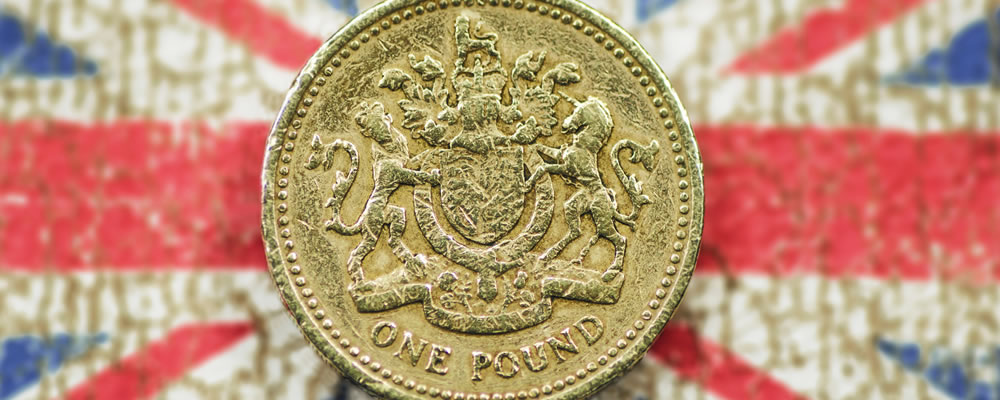- GBP EUR Exchange Rates Hover Above 1.16 – Could return to worst levels if PMIs impress
- Eurozone Consumer Confidence Meets Expectations – Lightens from -8.5 to -8.2
- Update: First September PMIs Mixed – Preliminary Manufacturing scores up, Services down
- Forecast: Another Quiet UK Eco-Calendar Ahead – Multiple German prints due next week
GBP EUR Exchange Rates Plunge on Fresh Brexit Speculation
The Pound to Euro exchange rate neared its worst post-Referendum levels on Friday afternoon after trending downward for most of the day in reaction to comments made by Britain’s foreign secretary, Boris Johnson.
Previously a prominent figure in the EU Referendum’s ‘Leave’ campaign, Johnson claimed he expected the formal Brexit process would ‘probably’ begin in early 2017.
While an official response from Downing Street reasserted that the final decision would be made by Prime Minister Theresa May, Sterling was sold en masse throughout the day. GBP EUR hit a September low of 1.1527 in the afternoon, and trended near this level for the remainder of the European session.
The day’s preliminary September Eurozone PMIs were mixed, but the Euro was able to hold its ground slightly thanks to news that German Manufacturing had come in well above expectations, bringing the overall Eurozone Manufacturing score to 52.6.
France’s PMIs also impressed, coming in well above expectations in both Manufacturing and Services. However, German Services scored a disappointing 50.6, bringing German and Eurozone Composite scores down to 52.7 and 52.6 respectively.
(Published 06:00 BST 23/09/2016)
This week’s GBP EUR exchange rates have seen little influential news thus far and as a result the pair hasn’t been able to sustain much movement. However, with Markit’s first Eurozone PMIs due for publication on Friday morning, the Euro could drive the Pound Euro pair as the week comes to an end.
GBP EUR continued to fluctuate in the region of 1.1630 on Thursday afternoon after having recovered from Tuesday’s monthly low of 1.1588. However, the pair is still less than two cents away from its worst levels in three years.
Pound (GBP) Struggles to Advance as Brexit Concerns Weigh
Sterling continued to trend on a relatively narrow and limp trajectory throughout Thursday’s trade session, with the currency still lacking in appeal and no supportive data to cheer markets this week.
Investors continued to be concerned that Britain will lose access to the European Union’s single market following the Brexit process, which has weighed heavily on Sterling this week.
The week’s sole influential UK dataset was Wednesday’s public sector net borrowing report, which disappointed markets by coming in at 10.1b, almost as bad as the forecast borrowing figure of 10.4b.
The figure did little to influence Pound movement, and neither did a report from the Office for National Statistics (ONS) stating that Britain’s economy has thus far seen little damage from the Brexit vote.
The Bank of England (BoE) also published new comments on Thursday following last week’s policy decision, stating that despite decent economic news in recent weeks the UK still faced a ‘challenging period’. The Financial Times reported;
‘The BoE’s Financial Policy Committee — which monitors and tries to mitigate risks to stability — said on Thursday that lenders could expect rules at least as stringent as those in place, cautioning that the UK now “faces a challenging period of uncertainty and adjustment”.’
Euro (EUR) Bolstered Slightly on US Dollar Selloff
The Euro’s movements continued to be generally soft on Thursday morning amid a lack of inspiring data published earlier in the week, but the shared currency was able to hold its ground slightly thanks to weakness in the US Dollar.
Wednesday evening saw the Federal Reserve hold its September policy decision, which disappointed markets by confirming that there was only potential for one US interest rate hike in 2016. This caused a US Dollar selloff, which benefitted its rival the Euro slightly.
However, the Euro was unable to make the most of the ‘Greenback’ selloff as most investors flocked to risk-correlated currencies following the news, meaning the shared currency still saw mixed movement on Thursday.
Thursday afternoon saw the publication of the Eurozone’s preliminary consumer confidence print for September. The results did little to shift the shared currency’s trajectory, as its score of -8.2 matched forecasts.
GBP EUR Exchange Rates Forecast to Advance if Eurozone PMIs Disappoint
Friday’s session will be the most vital this week in terms of Euro trade, as Markit will be publishing its preliminary September PMIs for the Eurozone.
These Purchasing Managers’ Index figures are typically used as one of the earliest indications of economic activity in a month, and Friday will see the publication of projections for German and Eurozone performance in Manufacturing and Services. Preliminary Composite scores will also be published.
As August’s Eurozone scores disappointed Euro investors, another slew of worse-than-expected PMIs in September would likely undermine the Euro and allow Sterling to sustain a solid advance.
Poor PMI scores may also cause concerns of the Brexit’s effects on the Eurozone to worsen, as well as potentially lead to bets of further European Central Bank (ECB) easing in the future.
On the other hand, better-than-expected PMIs could have the opposite effect and cause markets to be a little more optimistic on the short to mid-term future of the Eurozone’s economy. This could cause GBP EUR exchange rates to end the week lower.
Looking to the week ahead, there once again isn’t much on the calendar in terms of vital UK economic news. Monday will see BBA publish its August house loans report, and other house data will be published later in the week.
As for the Euro, a lot of relatively influential German data will be published next week headed up by IFO’s September business confidence scores on Monday and August retail sales on Tuesday. As such, it’s possible that the Euro will once again drive GBP EUR exchange rates next week.



